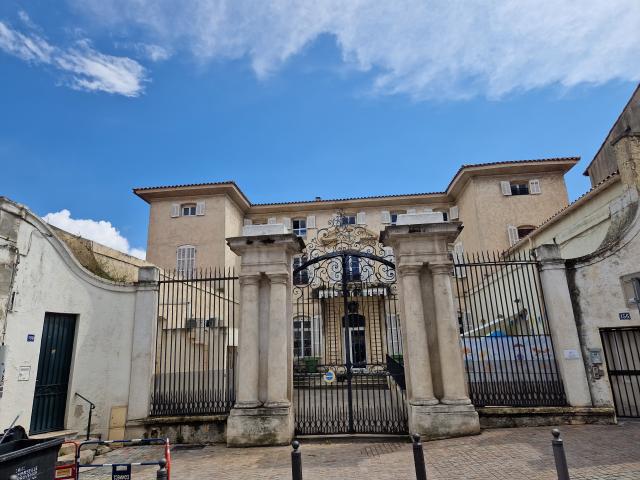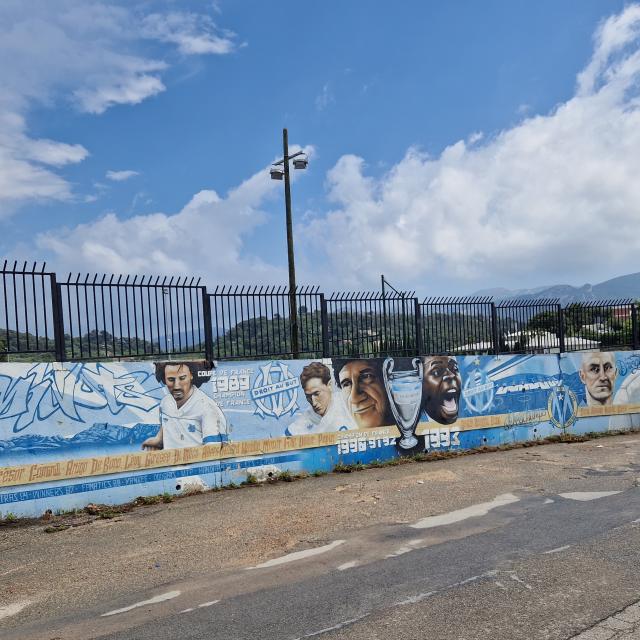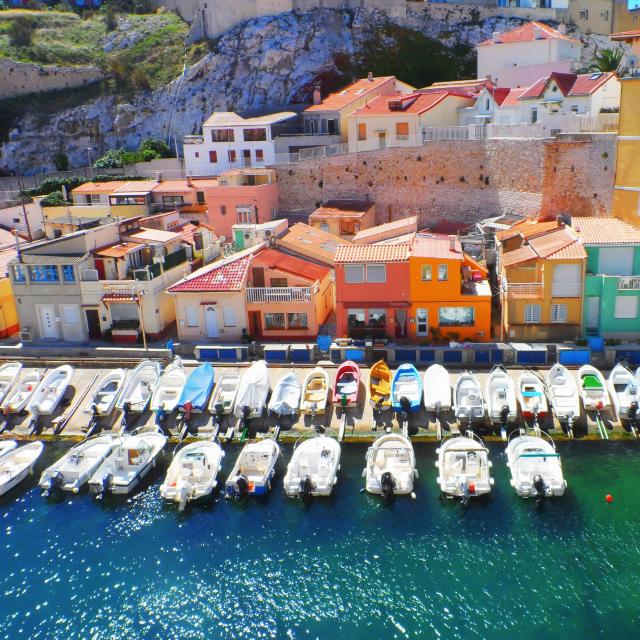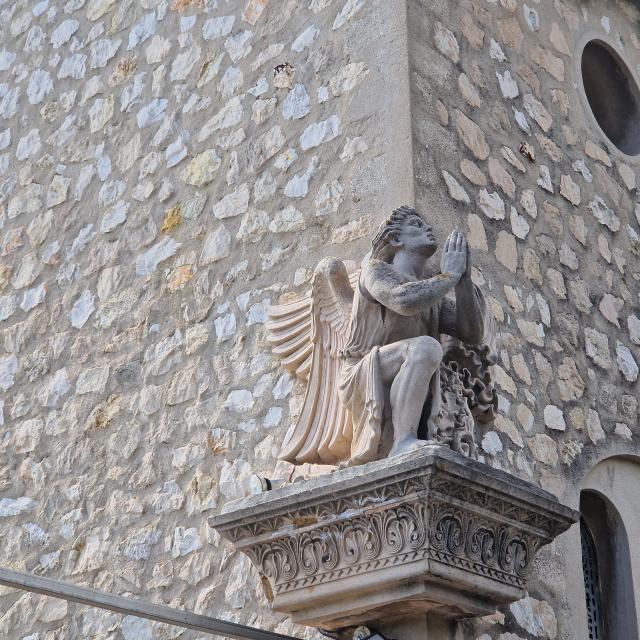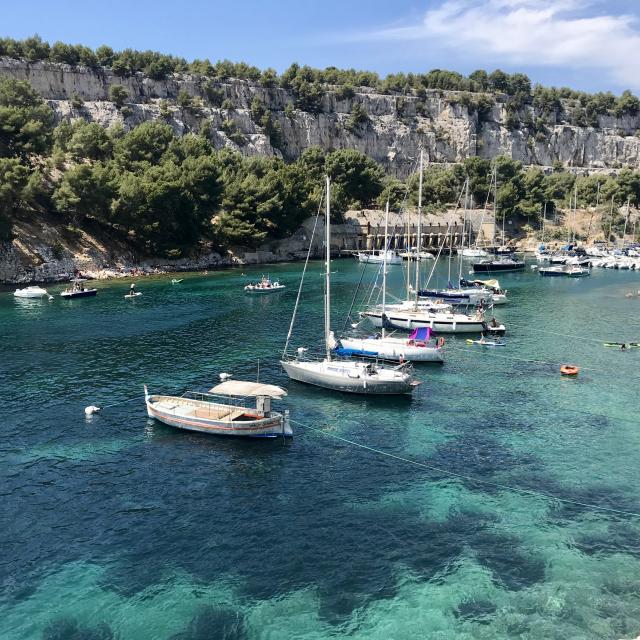A dynamic neighborhood
Located in Marseille’s 12th borough, Saint-Barnabé sits on the edge of the plateau overlooking the ruisseau du Jarret, to the east of the city of Marseille. Its neighbors are La Blancarde (to the west), Montolivet (to the north), La Pomme (to the south), La Fourragère, Les Caillols, Saint-Jean-du-Désert and Saint-Julien (to the east). The district owes its name to Barnabé Capelle, a notary from Marseille, who purchased land during the 15th century. He helped build a chapel and donated an altarpiece. In gratitude, the inhabitants decided to dedicate the place of worship to Saint-Barnabé.
Vibrantly bustling, the rue Montaigne is the main thoroughfare in the village of Saint-Barnabé. It brings together multiple local shops. The former Marseille tramway line crossed this street for a time. In fact, the Le terminus restaurant, the terminus of the old tramway, still exists along the axis of the street, opposite the village church on Place Caire.
Formerly known as route de Saint-Julien, the avenue de Saint-Julien is home to numerous commercial activities. It splits off from rue Montaigne at the western entrance to the village at the lieu-dit La Croix, so named because of the presence of a calvary which, today, is obscured by a war memorial.
Saint-Barnabé has managed to coexist a large commercial surface with small traders and the Thursday craft market. In fact, in addition to the small shops in neighboring streets, a place called Saint-Barnabé-Village has been set up on the site of the former École des électriciens, now the ‘École d’ingénieurs de Marseille’ (EIM), which was transferred to the Château-Gombert district in the 1980s. It includes a superstore, shops, pedestrian areas and a parking lot.
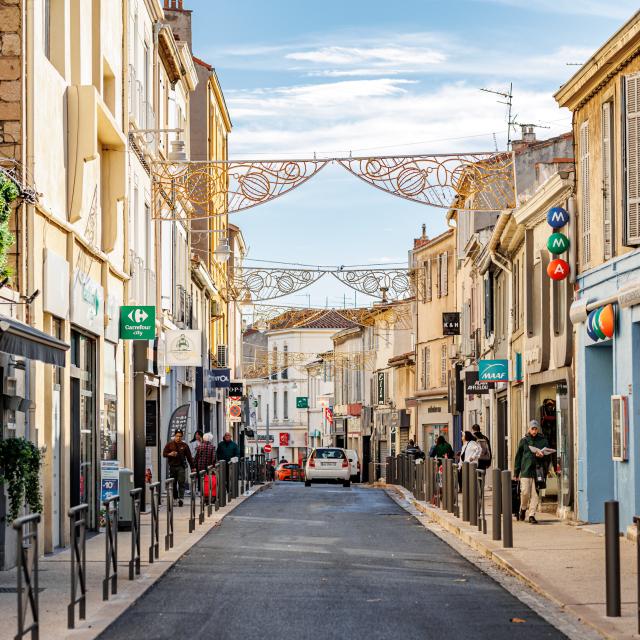 Saint Barnabemassimomunicchi 2
Saint Barnabemassimomunicchi 2 Saint Barnabemassimomunicchi 3
Saint Barnabemassimomunicchi 3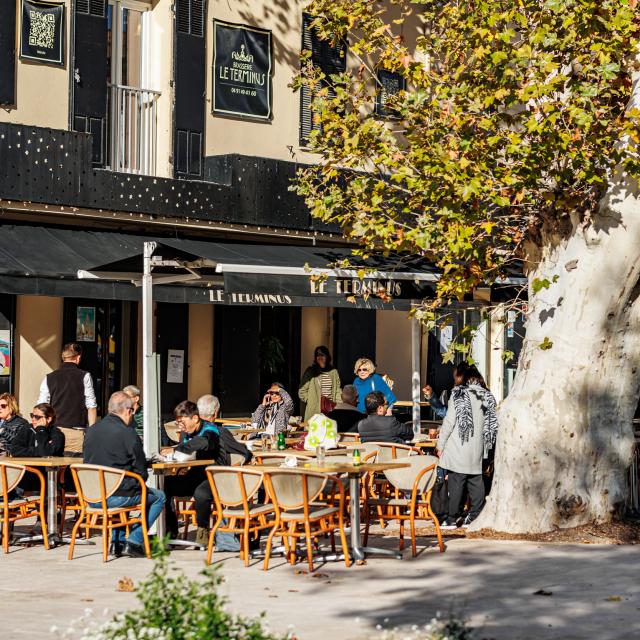 Saint Barnabemassimomunicchi 14
Saint Barnabemassimomunicchi 14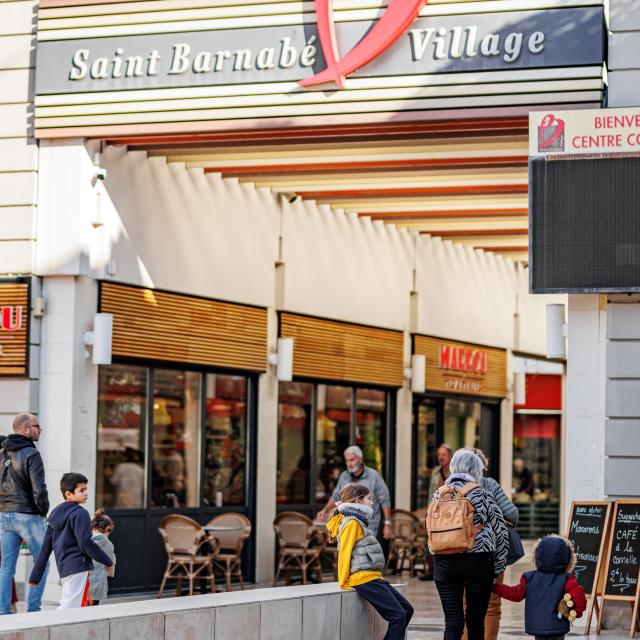 Saint Barnabemassimomunicchi 5
Saint Barnabemassimomunicchi 5

